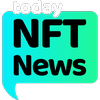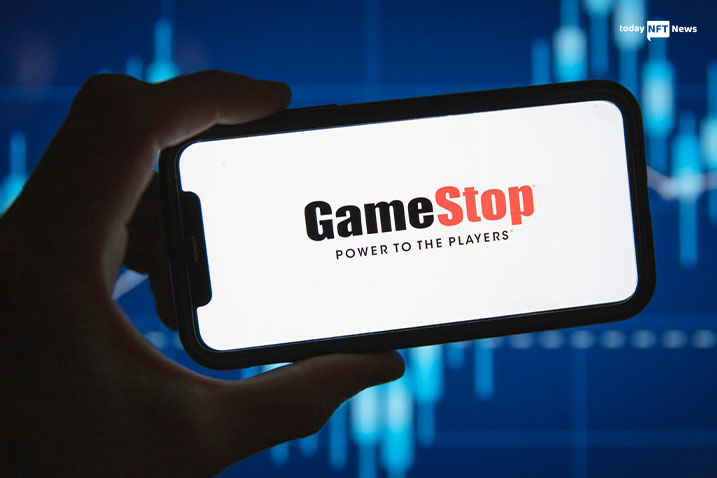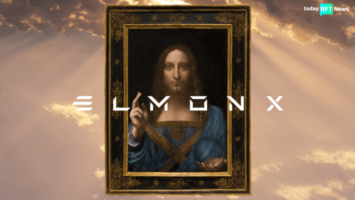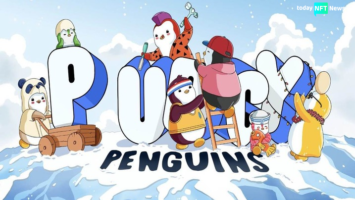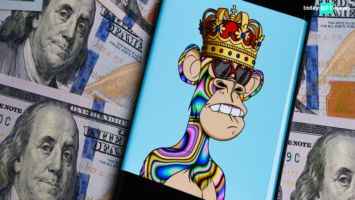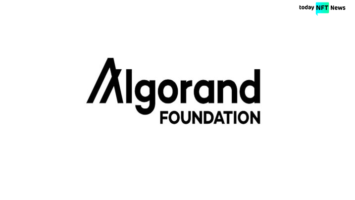GameStop was all over the news in 2021 for all the right reasons, as it was exceptionally popular in the US stock market. To keep the business blooming in line with the evolving technology, the gaming retailer took a step towards the crypto space.
With a goal to establish crypto ventures and make a presence that dominates the market, GameStop launched its own wallet and marketplace. The latter earned a lot of attention initially, which pushed us to pay attention to it and discuss it in detail. Let us begin!
What is the GameStop NFT Marketplace?
GameStop is a popular consumer electronics and video gaming retailer with headquarters in Grapevine, Texas. The brand has a variety of accessories as well as gaming systems that include PlayStations, Nintendo, Xbox, WII, and more.
After undergoing an insane loss in Q4 of 2021 and laying off some employees, GameStop decided to try its luck in the crypto space. In the beginning of last year, the company announced its plans to launch its own NFT marketplace, be a part of the evolving blockchain space, and boost revenue. The GameStop NFT marketplace was launched on July 11, 2022.
Let’s cruise – https://t.co/zhNbY36C2x is here!
— GameStopNFT (@GameStopNFT) July 12, 2022
GameStop NFT has launched for gamers, creators, collectors, and community members to buy, sell, trade, and create NFTs (“Non-Fungible Tokens”)! pic.twitter.com/KDyGkn6wNQ
Built with the notion of decentralization, the marketplace allows users to purchase, mint, and sell NFTs. The marketplace tasted immediate success and recorded a trading volume of approximately 1,831 ETH besides earning $45,000 in transaction fees on the very first day.
The NFT market was left surprised when the GameStop NFT marketplace surpassed Coinbase in two days.
How does GameStop NFT Marketplace Work?
The marketplace is developed on a Layer-2 scaling solution on Ethereum, the Loopring network. It is because of Loopring that the GameStop marketplace has high transaction speeds and low gas fees.
Thousands of transactions can be processed on the marketplace by Loopring with economical gas fees. The network batches the transactions in a single block and sends them on Ethereum, which makes the transaction not only faster but more affordable as well.
Being in the early beta stages, GameStop marketplace exclusively supports Loopring as of now. NFTs based on Ethereum can’t be traded since the marketplace doesn’t support Ethereum natively.
Having said that, NFTs that are minted on Loopring can only be purchased, sold, or traded. Since the majority of NFTs are based on the Ethereum blockchain, this calls for a prominent limitation of the marketplace.
Besides Loopring, GameStop has added Web3 gaming NFTs to its marketplace through Immutable X. Currently, GameStop, in partnership with Immutable X, is giving grant money worth $100 million to both creators and builders for the development of the marketplace and to create big things.
How to buy NFTs on GameStop’s Marketplace?
Buying NFTs on GameStop is simple and quick. Follow the steps explained below for an effortless experience.
Create/connect a wallet
The NFT marketplace enables its users to link their current wallet, be it MetaMask or any other supported wallet. Another option is downloading the native GameStop Wallet on Google Chrome like an extension.
Enter details
Fill in the required details on the wallet, which also includes creating a display name and profile settings.
Add cryptocurrency to the wallet
Cryptocurrency can be added via two ways. The first way involves purchasing ETH from the wallet that’s connected to GameStop. By doing so, ETH is deposited into the wallet on Layer 2. The second way is transferring ETH from a current wallet, i.e., layer 1, to the layer 2 wallet/account that’s linked to GameStop.
Activate layer 2
It is possible to directly activate the Layer 2 account. Once the funds or ETH are deposited in the GameStop linked wallet (Layer 2), select “Profile” and click “Activate Layer 2.” A dialog box will open to confirm the one-time fee required to activate the Loopring Layer 2 account. The transaction has to be approved in the wallet.
Transfer funds to the correct network
It is very easy to bridge funds between Layer 1 and Layer 2. By following the above steps to deposit funds and activate Layer 2, bridging the funds between the layers can be done easily. After connecting the wallet, click “Profile.” Now click “Deposit ETH” and enter the amount that’s desired to bridge. The transaction will occur automatically, and it is now possible to browse the marketplace.
Buy an NFT
Check out various arts and collections by clicking “Explore.” The “Stats” page can also be checked to discover details like total sales volume, floor volume, changes in the total price, and more. If an NFT looks interesting and is worth buying, select it and click “Buy Now.” The total amount needed for the payment and fees will be indicated. Click “Checkout” to begin the transaction.
Complete the purchase
The crypto wallet will display a window showing the gas fees required to complete the transaction. Complete the purchase by confirming the transaction.
How to create NFTs on GameStop Marketplace?
The marketplace enables creators through an invite-only process as of now. To enter and sell on the marketplace, creators must fill out the Creator Induction Form.
Once the form is approved, it is possible to create/mint NFTs on the marketplace. Here are the steps to mint an NFT on GameStop.
Connect wallet
Connect the wallet and click the “Profile” icon. On your profile page, select the Create button to begin.
Create a Collection
It is required that the NFT to be minted is inside a collection. Create a new collection by selecting the “+” icon. Add the title, thumbnail, and other required details. The details can be edited after the collection has been minted.
Add details
Add the NFT media to the website. It is also possible to describe the non-fungible token by adding the metadata as well as entering the number of editions desired to mint the NFT.
Let it approve
After the “Save” button is clicked, the NFT is reviewed by the NFT moderator. Once the review is done successfully, a preview can be seen and the NFT can be minted.
Mint the NFT
After the NFT is drafted, click the “Mint” button. The transaction fees to mint the collection will be displayed. Sign the transaction after approval. Until the mint process goes on, stay on the page.
Set the price
The NFT collection will be available in the wallet, and the profile page will be under the “Collections” tab. The price for the collection can be set by clicking on the NFT. This will redirect to the NFT detail page. The NFT can now be listed for sale or transferred. It can also be withdrawn to Layer 1 by clicking “Manage NFT” from the detail page.
Edit banners
The banner and thumbnail of the collection can be edited. From the collection detail page, click “Edit collection” to update the assets, description, and links of the collection.
It’s done
Click “Save Changes” to see the NFT on the marketplace.
Once minted, it is impossible to change an NFT. Details like title, description, thumbnail, and metadata are uploaded permanently on the blockchain.
Wallets supported by GameStop NFT Marketplace
The GameStop NFT marketplace currently supports only the GameStop Browser Extension Wallet, WalletConnect, and MetaMask.
Payment Methods Supported by GameStop
The marketplace has only one payment method currently, and that is cryptocurrency, specifically Ethereum (ETH). ETH must be transferred from the Ethereum network to the Loopring Layer 2 of GameStop in order to make the payment. Fiat currencies such as U.S. dollar are not supported.
GameStop Marketplace Fees
The marketplace charges 2.5% per transaction. Since the fee is applied to the selling price of the NFT, buyers need not pay anything while purchasing the NFTs.
Creators have the freedom to set fees on their own and it may range up to 10%. On every sale, they receive the creator fee. Also, creators can adjust the fee whenever they want.
Types of NFTs Available on GameStop Marketplace
The GameStop marketplace offers over 350 NFT collections with around 55,000 rare non-fungible tokens. Some of these NFTs are limited editions.
Some NFTs that are available for purchase are stickers, TV series, digital art, music, collectibles, photography, trading cards, sports, and utilities.
Pros and Cons of GameStop
| Pros | Cons |
| The NFT marketplace has a user-friendly interface. | GameStop only supports the trading of non-fungible tokens that are minted on Loopring. |
| It is a non-custodial marketplace, which means users are the owners of their digital assets. | The platform has limited NFT collections. |
| There is no account minimum that is needed to use the platform. | The marketplace has very low royalty fees. |
| The transaction fee is quite low. | Only ETH is supported for payments. |
The GameStop Wallet
While launching the marketplace, GameStop Wallet was launched too. A browser extension wallet, it works in conjunction with the marketplace. With the release, the wallet led to a rise of 3% in the firm’s shares.
The wallet is self-custodial, which means that funds belong to the users only. NFTs and Ethereum can be stored without worrying about them being owned by the exchange.
Moving on, since it is a browser extension wallet, it can be added as an add-on for Brave web and Google Chrome browsers. As a result, it is possible to trade NFTs and crypto and engage with Web3 applications without any complications.
Security
As mentioned above, the browser extension wallet is a self-custodial wallet, which gives users control of their cryptocurrency-based assets. Assets inside the wallet are secured based on the security practices adopted by users. A password can be used to secure the wallet.
To offer a decentralized as well as a distributed solution for the purpose of storing and accessing data and files, the InterPlanetary File System is used by the marketplace. IPFS refers to a distributed file storage contract and distributed systems that enables computers worldwide to both store and save files. This way, creators can distribute their work without spending anything.
Controversies
The marketplace launch had certain controversies attached. For instance, earlier, GameStop’s theme was an astronaut and the focus was on selling similar NFTs. However, one NFT turned out to be a photoshopped version of a photo that featured a man falling from the Twin Towers in the 9/11 deadly terrorist attack.
This particular NFT was sold many times and even had a price of 5 ETH before it was removed.
Another incident came into light when a collection was caught on the grounds of selling unlicensed work, which led to severe backlash from the community, which again led to its removal from the marketplace.
Such incidents harmed GameStop’s performance in terms of an NFT marketplace.
Q2 report mentioned that GameStop’s revenue was $1.4 billion, which meant that non-fungible tokens made only 3.5% of the total, which didn’t look like a major proportion of the company’s business.
Conclusion
GameStop NFT could be called a simple and easy marketplace for both creators and collectors. Despite a few not-so-good aspects, such as restricted transactions in ETH, it is an option worth considering. The marketplace has the potential to become a strong competitor in the crypto space.
FAQs
There are many marketplaces that are considered best for selling, and one of them is GameStop.
According to GameStop, the NFT marketplace is a non-custodial, Ethereum Layer 2-based marketplace that enables users to own their digital assets, which are both displayed and secured on the blockchain.
Please refer to the article above to discover the process of buying NFTs on GameStop has been explained above.
NFTs have turned into a good investment opportunity though the market is uncertain. To find an NFT that’s worth investing in, it is recommended to check its rarity score, see the most looked after NFTs in different collections and utilize the data to estimate how the NFT is likely to perform in the future.
OpenSea is the largest marketplace in terms of trading volume.
